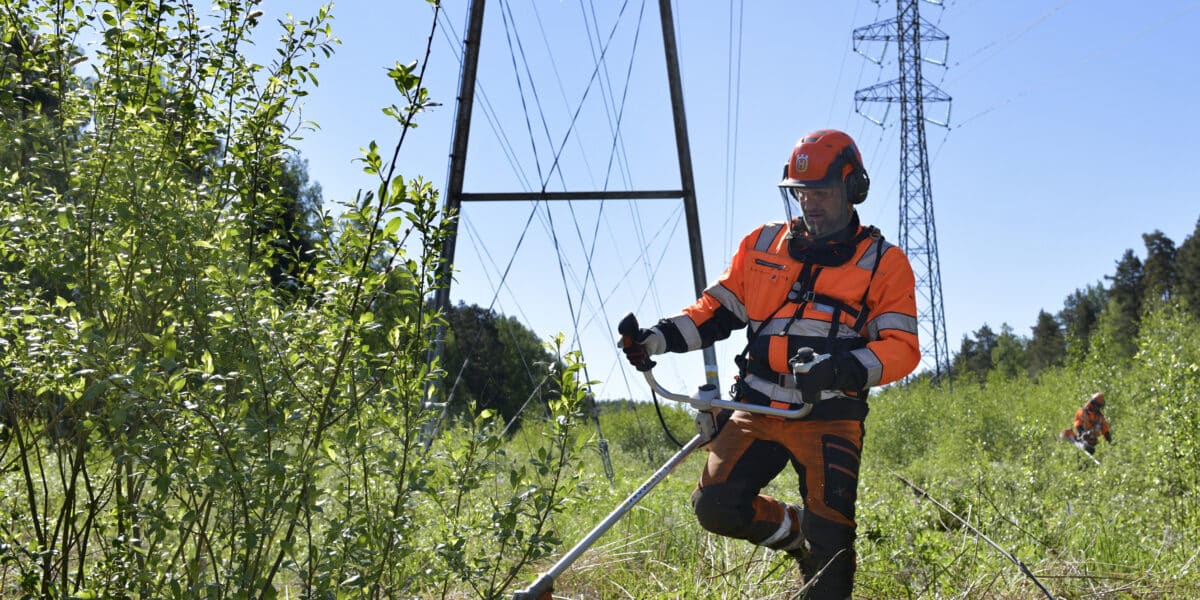Clearing and tree-felling ensure that trees do not encroach on transmission lines or fall onto them, which could cause electricity distribution disturbances or personal injury. Electricity safety takes precedence over transmission reliability in the grounds of people’s houses, in particular.
On average, clearing takes place every five to eight years, although more frequent clearing may be required in built-up areas, for example. Most clearing work is performed by people working with clearing saws.
In 2022, a total of 5,500 hectares of land will be cleared. Approximately 7,000 landowners were notified of the clearing by letter.
The transmission line area is divided between the transmission line right-of-way and the border zone. In principle, there should be no trees in the right-of-way. The border zones are the areas on both sides of the right-of-way, and vegetation is allowed to grow in these zones until it reaches redemption height. For
example, at the near edge of the border zone, trees may be up to ten metres tall.
All in all, there are approximately 34,000 hectares of transmission line rights-of-way that must be kept clear.
You can submit feedback on vegetation management using Fingrid’s map feedback system. This site also provides information about forthcoming clearing and chipping sites.







